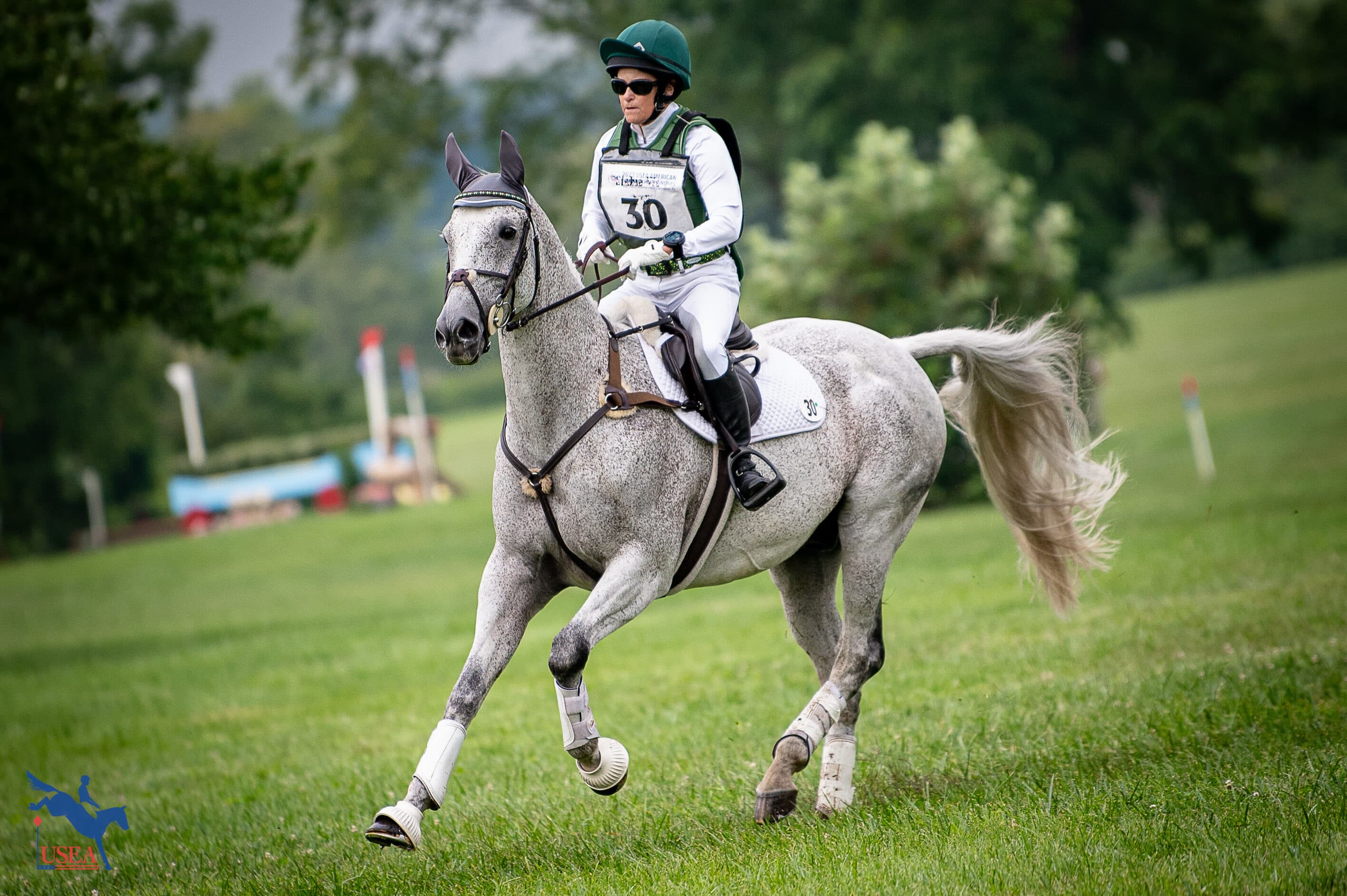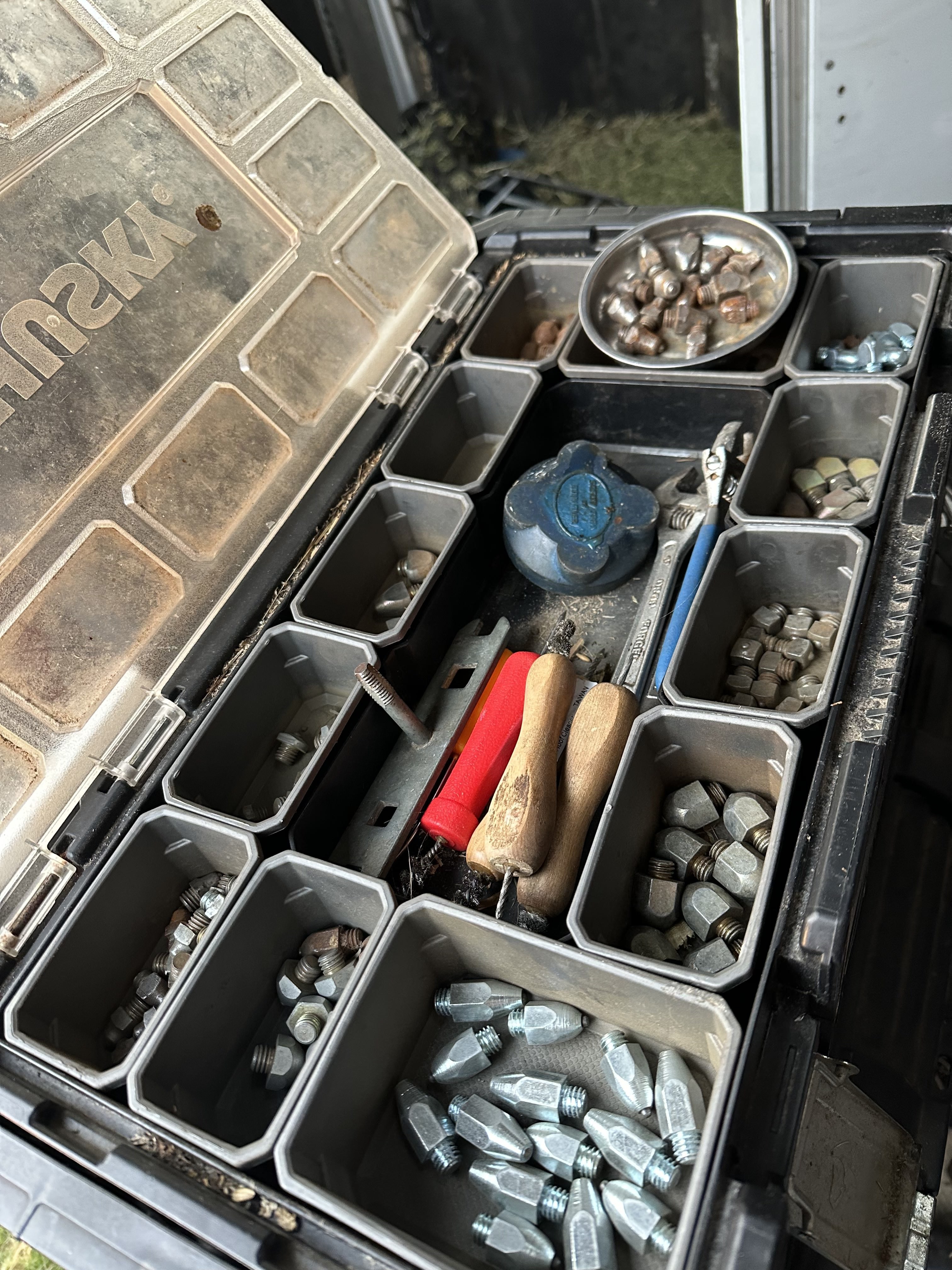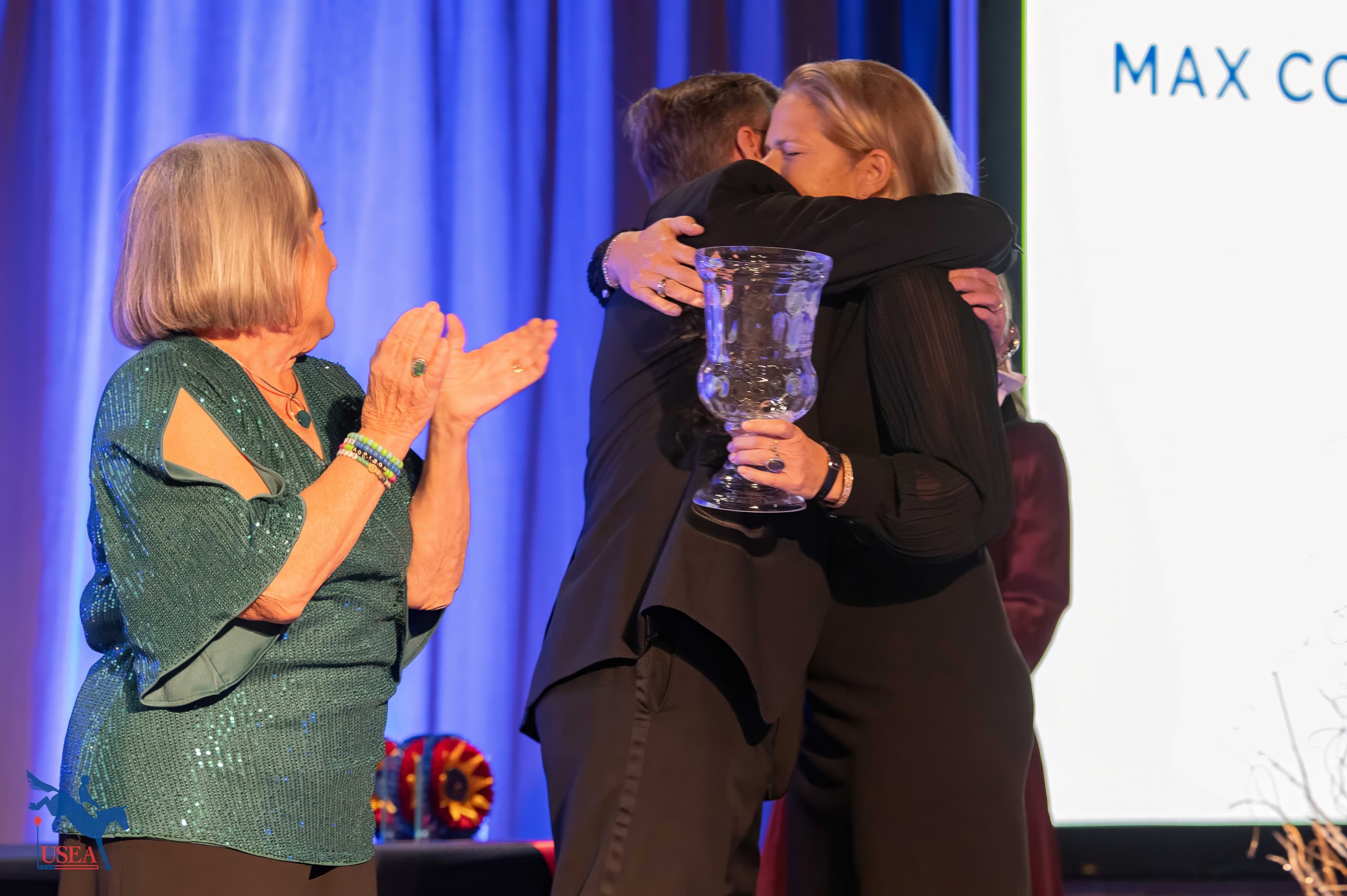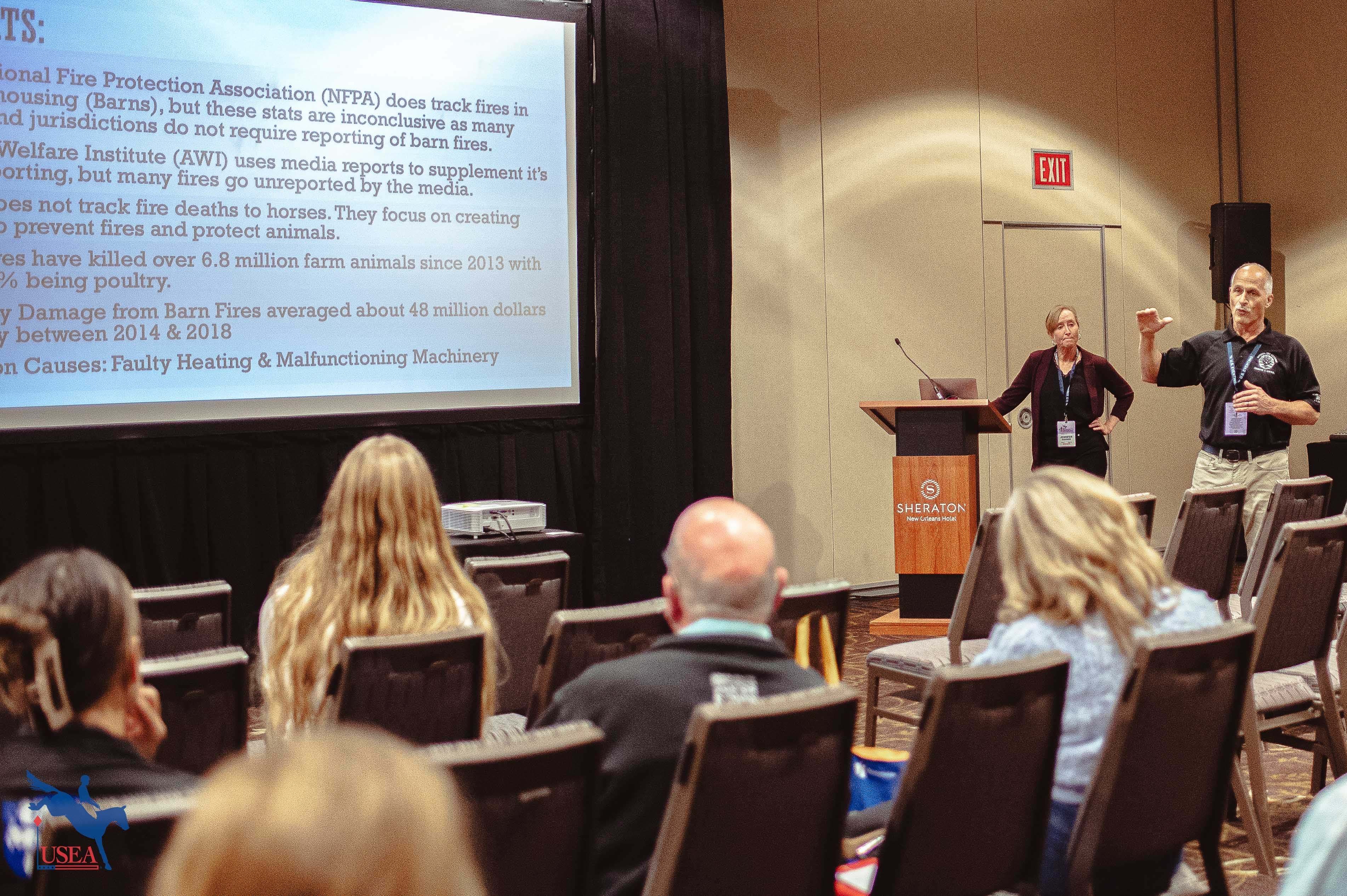Studs 101: Max Corcoran's Guide to Perfecting Your Stud-Kit

As most eventers know, the key to success in the show ring often lies in the preparation done beforehand. For the cross-country phase, memorizing your course and having a plan is a given, but another key factor to consider is choosing the appropriate studs for your horse. If you're new to the sport, the concept of studs might seem a little overwhelming, but former USEA President and current co-chair of the USEA Grooms Committee Max Corcoran broke down all of the basics that you need to know when putting together your stud kit for the first time or before packing up for your first show of the 2024 season.
“Studs are like cleats,” shared Corcoran. “They aid with traction, but in saying that we have to be really careful that we don’t use them just for balance. You should be able to go around a cross-country course without studs just fine if you know how to balance your horse correctly. But, the faster we go, and the further we go up the levels, the quicker the combinations and turns come up, and the speed at which you have to slow down and speed up gets more intense, and that is where studs can really help us keep our horses balanced.”
Building a Well-Stocked Stud Kit
The first step is packing a well-stocked stud kit, and the necessities aren’t always found only in your local tack store. In fact, one of Corcoran’s go-to items is found in the fishing aisle of almost any department store.
“I have always found that the little fishing tackle boxes seem to be the best because they have all of the little individual squares where you can sort out all of your studs in a very organized way.”
Some of Corcoran’s other must-haves include:
- A wrench that is small enough to handle and use easily
- A magnetic catch-all try for holding your studs (these can be found at most hardware shops)
- A horseshoe nail for picking out stud holes
- Corcoran noted a best practice is to stick a piece of duct tape as a flag at the top of the nail so that if you do drop it, it is easy to find again in the shavings!
- Cotton-style stud plugs that are pre-oiled.
- A tee-tap, and Corcoran prefers the flat, rubber kind for safety versus those with a big metal bar.
Then it's time to fill your new stud kit with all of the essentials, but with so many different types of studs on the market it can feel overwhelming to know which kind you might need to start with. Corcoran suggests starting off with the basics.
“If you are buying your first set of studs, I think having road studs and different sizes of grass tips are the two major ones that you will end up using the most—especially if you are competing at a facility where you will be show jumping on grass.”
As you move up in the levels, the square block studs in varying heights and bullet studs are other handy options.
Another helpful hint from Corcoran: “Always buy five of each stud! You are undoubtedly going to lose one at some point.”

The When, Where, How, and Why of Stud Usage
Having this selection of studs at your disposal is great, but only if you understand when to properly use each of them.
“I always say to people, ‘If you were running around in a circle and trying to stop and change your direction quickly, what would you need in your feet to do that?' ” Corcoran noted.
Think of hard ground, for example. Hard ground and dry grass can be quite slippery so having studs for traction is important. That being said, you don’t want to over-stud on the day of because that can put your horse’s feet and legs at a weird, unnatural angle because the stud is not piercing the hard surface.
Muddy ground, on the other hand, can handle a bigger stud, Corcoran shared.
“The square studs will actually get into the ground and give you more traction in that instance.”
Bigger isn’t always better for most eventers, however. “The really big pointy studs are truly for the environments like Kentucky or Burghley, those places where it is more dirt and has more turf to it because you need a bit of a point to pierce into the turf, and then the block to give you traction in the dirt.”
As you walk your course, take note of the ground beneath you so that back at the barn, you can plan your stud selections properly. Now it’s time to decide which studs to place where.
“Typically, I would put a bigger stud behind than I would up-front because that is the engine, and that needs more grip,” said Corcoran. “Think about when your horse is making their turns; it’s the hind legs that they are rocking back on, and when they are jumping, they are pushing off of those hind legs.”
Corcoran advises against putting a sharp stud on the inside hole on both the front and hind feet to prevent your horse from accidentally injuring themselves. Instead, she prefers to put that sharper stud on the outside hole.
“If you watch a slow-motion video of a horse turning, they need to get into the ground with their hind foot. Usually, that inside hind foot is the first thing that will hit the ground as they’re making a turn, so that needs to be able to punch into the ground. So if you have a short stud on the outside, it is really going to help the horse get into the ground and help you help them balance.”
For the fronts, Corcoran says to keep it simple.
“You want to make sure you never place too large of a stud up front because, by nature, the horse’s foot is supposed to shift a little bit when they land or when they are moving. If there is no movement when their foot hits the ground, all the pressure and all the weight and force behind that footprint goes straight up that leg, requiring their suspensory to have to work to be that much more flexible if the ground doesn’t shift away.”
Best Practices for Safety
There are quite a few things to keep in mind when using studs, most of which are done to keep your horse safe. One of Corcoran’s most important tips is to remove your horse’s studs before removing their boots to prevent accidental nicks.
While it is easy to tack up and load your horse on the trailer for a quick trailer ride to a cross-country schooling location, Corcoran also advises against horses wearing studs in the trailer.
“If you think about it, we are asking the angle of their feet to change and we don’t want them to be standing too long on that funny angle,” she noted.
If you're riding a young horse that is new to the sport, make sure you school at home with studs in before heading out to a competition.
Of course, boots are a given when running cross-country, but even more so when using studs. Another best practice is to use a stud guard girth, especially if your horse is an exuberant jumper and very tidy with their legs.
While at the show, be sure to clean out your stud holes and place fresh cotton stud plugs in the day before your cross-country run. This ensures that you'll have a quick and painless process of applying your selected studs the day of. Then, after your run be sure to clean out the holes and plug them again right after.
Lastly, Corcoran noted, as with anything else, the most important part of picking the right studs for your run that day is knowing your horse through and through.
“Some horses prefer to have studs in. and they just feel better about it. Some horses actually don’t like a lot of studs," she said. "Know the type of shoes that your horse is in, because some shoes, like a bar shoe, are a lot more slippery than a regular open shoe. Or if your horse has pads, that can also really affect the traction, so it is so important to be conscious of that.”
About the USEA Grooms Program
The aim of the USEA Grooms Program is to drive educational opportunities for grooms, sustainability for groom careers, and promote equine management and welfare. The USEA Grooms Committee reports to the VP of Active Athletes and is comprised of many current professional grooms in the industry. Throughout the year, the Grooms Program hosts educational seminars on top horse care techniques and topics for anyone who is interested in attending. Click here to learn more about the Grooms Program and view the schedule of upcoming seminars.














